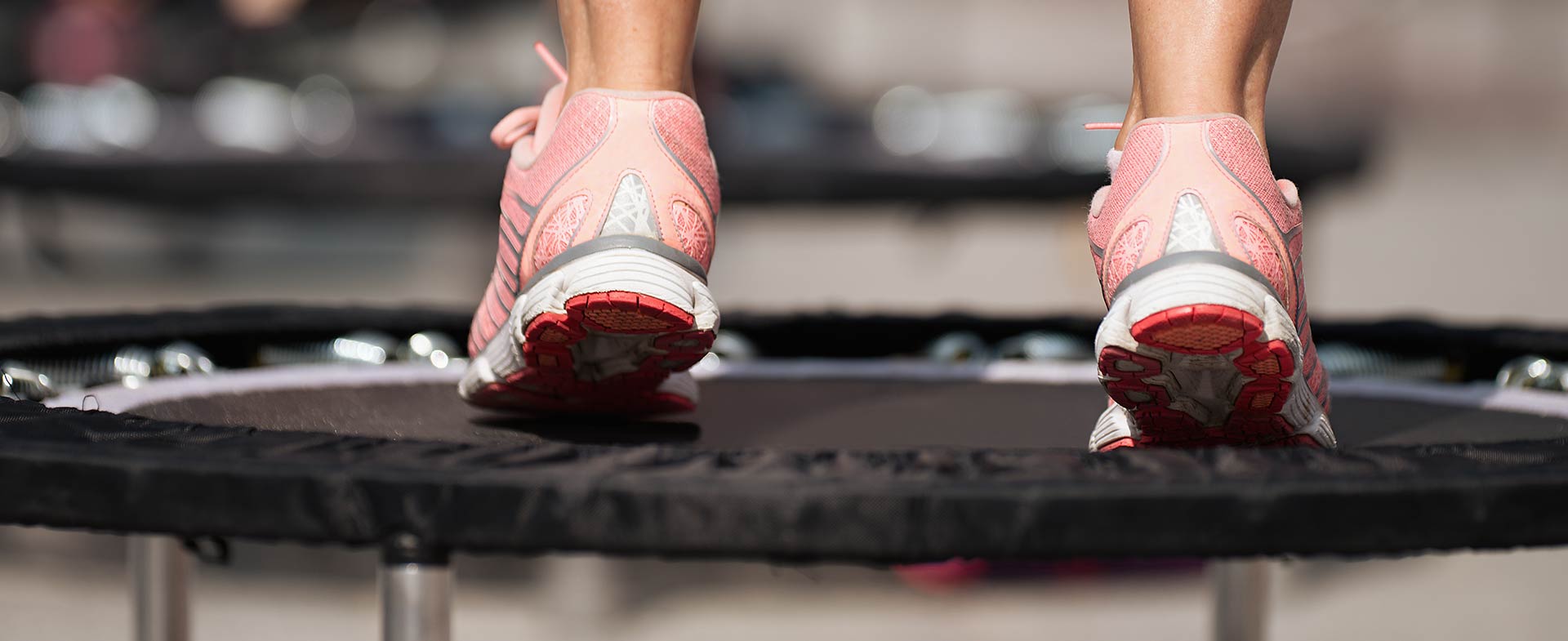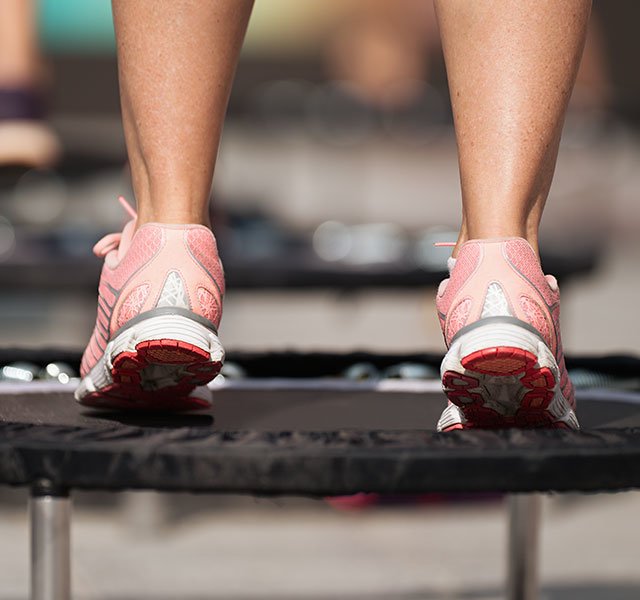In the fitness world, fun often gets overlooked as a crucial component of a workout. That is, unless, a trampoline is involved. Whether you choose a one-hour session at a local trampoline park or pull out a mini-trampoline and bounce in front of the TV, jumping in place can be a surprisingly carefree, nostalgic and beneficial workout.
The Perks of a Trampoline Workout
If you’re bored with your tried-and-true exercise routine and want to have more fun while you’re sweating, consider incorporating a trampoline. Here are four perks of this playful piece of equipment:
- It’s dynamic: When you work out on a trampoline, you’re constantly moving in every direction – up, down and side to side. In that way, trampoline workouts are similar to plyometrics. Few pieces of equipment allow you to go in all three planes of movement with ease.
- Your kids can join you: Trampolines are fun for the whole family. In fact, you might even discover you get a better workout when you invite your kids to join you. Their energy and excitement can be contagious. Plus, it’s a great bonding activity since you’re burning off steam together.
- They’re great for sensory stimulation: For people who have sensory challenges, jumping on a trampoline can help build core strength and enhance proprioception (your awareness of where your body is in space). Therapists even use them in physical rehab settings.
- It can be easy on the joints: Bouncing on a trampoline offers some of the same benefits as running or jumping rope, but without stress on your joints since you’re exercising on a more forgiving surface.
- They’re fun: Few fitness routines are as breezy and carefree as jumping on a trampoline. You can do a structured workout or just bounce around for 20 minutes. In either case, you’ll burn calories and tone your body.
Breaking Down a Trampoline Workout
To get the most out of a trampoline workout, it’s best to follow a certain structure, including warm-up, workout and cool-down moves. A solid routine looks something like this:
- Warm up: Before you start jumping in earnest, warm up for two to three minutes by gently bouncing up and down.
- Work your core: Jump up and hold your body in a straight position with your arms raised and land in the same position. Or try a tuck jump – pull your knees to your chest and grasp your hands around them while in mid-air. Swivel seat drops are also great for your core muscles: Jump in the air, do a seat drop (moving your legs forward so you land in a seated position on the trampoline). After the bounce, do a half-twist in the air and land in a seat drop so you’re facing the opposite direction.
- Do some upper body moves: Pushups, tricep dips and upper body plyometrics aren’t only effective on solid ground. Do them on a trampoline to further challenge your muscles. You can even tilt a mini-trampoline against the wall and throw a medicine ball or soccer ball against it.
- Cool down: Don’t just hop off the trampoline at the end of your workout. Take a few minutes to bounce lightly and let your heart rate return to baseline.
Play it Safe
While bouncing on a trampoline looks easy, it certainly isn’t foolproof. Comprehensive backyard trampoline workouts are best suited to folks who are already in good shape and have solid proprioception skills. If you want to enhance your balance and proprioception or rehabilitate after an injury, try a mini-trampoline with the guidance of a healthcare professional and/or athletic trainer.
The risk of injury is always higher on an unstable surface. If you have a history of lower body injuries, ankle fractures or knee problems, trampoline workouts may not be for you. Similarly, if you have balance issues, the unstable surface of a trampoline can be challenging.
To find a doctor or athletic trainer at Henry Ford, visit henryford.com or call 1-800-HENRYFORD (436-7936).
Nick Parkinson, M.Ed., ATC, AT, currently works with the student athletes at University of Detroit Jesuit High School, as well as serving in the role of Lead Athletic Trainer with Henry Ford Sports Medicine. He is a regular contributor to Henry Ford LiveWell. Learn more about Nick.



